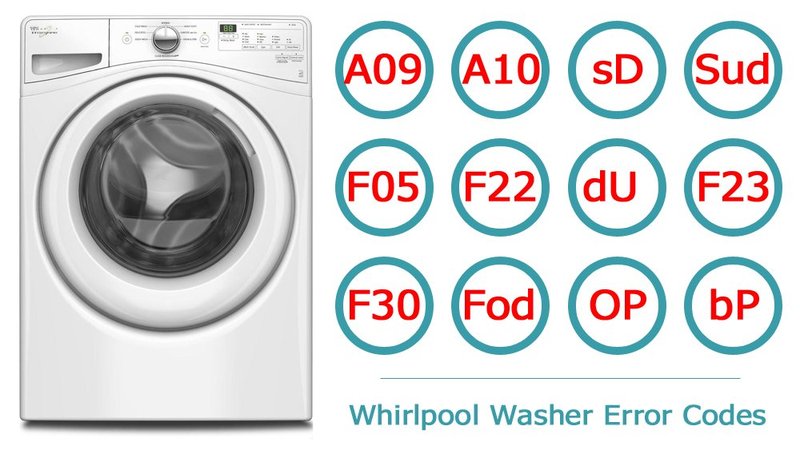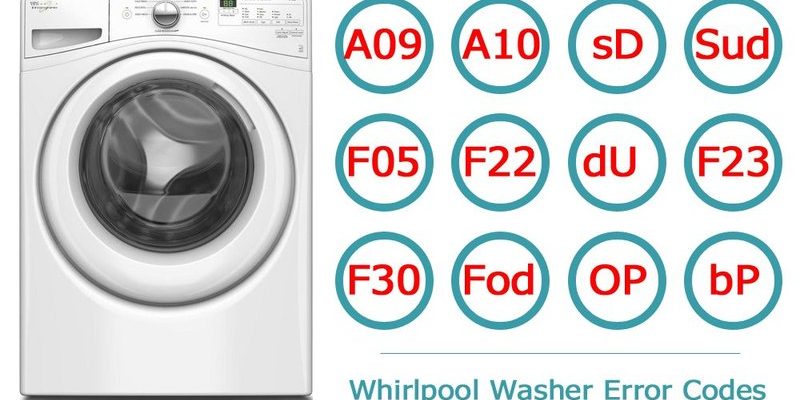
The UE error typically indicates an imbalance in the load. Imagine you’re trying to balance a wobbly table by putting sugar packets under one of its legs. The table stands straight for a bit, but it’s not stable. Similarly, an unbalanced load means that the clothes inside the machine aren’t distributed evenly, which can make the drum spin awkwardly and potentially lead to more serious issues if left unchecked. But don’t worry just yet—it’s not as terrifying as it sounds, and you can often fix it with some easy adjustments.
Understanding the UE Error Code
The UE error code is all about balance—or, more accurately, the lack of it. Your Whirlpool washing machine tries its best to keep things steady during the spin cycle. Think of it like a well-trained chef carefully weighing ingredients to ensure a perfect recipe. When things don’t add up just right, the machine senses the imbalance and throws up the UE code to flag its concern.
Why does this happen? It could be due to several reasons. You might have overloaded the machine, which is like stuffing a suitcase to the brim and hoping it will still close smoothly. Or perhaps there’s a heavier item such as a towel taking up one side while lighter clothes are on the other. What this does is make the drum spin off-kilter, which isn’t ideal for the longevity of your machine. Just like driving a car with unevenly inflated tires, it may work for a while but it’s not sustainable in the long run.
So, is it safe to continue using the machine with the UE code showing? Well, using it sparingly might not cause immediate harm, but it’s not advisable as a regular practice. Over time, ignoring this code can lead to more wear and tear on the motor and suspension, leading to potentially costly repairs. The easiest approach? Stop the machine, redistribute the load evenly, and restart the cycle. It’s a quick fix that can save you a lot of future headaches.
Steps to Fix the UE Error
Now that you know what the UE error stands for, let’s tackle it head-on. First off, when you see that UE code flashing, it’s time to inspect the washing machine’s load. Pause the cycle and open up the lid. Take a look inside. Are there too many clothes or perhaps just a small load with a couple of bulky items? Just like trying to balance a seesaw, you want the weight to be evenly distributed.
To address this, first try redistributing the clothes. Take out some items if it’s overcrowded, or add more if it’s a tiny load. The idea is to balance the weight so that the drum can spin smoothly. It may help to mix heavier and lighter items evenly around the drum. Think of it like placing books on a shelf—you wouldn’t pile heavy ones on one side, right?
Once rearranged, close the lid and restart the cycle. In most cases, the machine should proceed without a hitch. If the UE code persists, double-check to ensure there aren’t any smaller issues at play, like something stuck beneath the drum. Should the problem remain, it could be time to consult your manual or reach out to a professional technician to avoid long-term damage.
Preventing Future UE Errors
If you’ve fixed the issue, you might be wondering how to avoid it happening again. Consistently running into the UE error can be a bit like a recurring nightmare. Fortunately, a little bit of attention and care can help keep it at bay.
Start by always balancing your loads. Imagine your washing machine as a team that works best when everyone pulls their weight equally. Avoid throwing in a heavy blanket with just a few shirts, as the discrepancy can lead to imbalance. Instead, aim for a mix, or wash similar items together. It’s also wise to check your machine’s capacity and stick within its recommended limits—this ensures the machine isn’t overpacked and can function properly.
Additionally, use the correct cycle for the type of load you’re washing. Different fabrics absorb different amounts of water, just like a sponge soaks up more water than a cloth. Selecting the right cycle helps maintain balance automatically. Regularly check your washing machine for wear and tear, and don’t shy away from maintenance checks by a professional. A well-maintained machine is less likely to throw error codes and more likely to give you clean clothes without the extra drama.
By keeping these tips in mind, you ensure your Whirlpool washing machine continues to serve you well without frequent interruptions from pesky error codes.
